Test Case vs Test Scenario: What’s the Difference?
When planning software tests, the terms "test case" and "test scenario" are often used interchangeably. However, they serve different purposes, and understanding how they are related will help you document your test plan more clearly to different stakeholders in your team.
What is a Test Scenario?
A test scenario is a high-level user journey that you want to verify.
It answers "What behavior am I testing?" — instead of how.
The audience for this documentation is often management or business teams. So, it's written in broad and conceptual, and written in plain language so that it can be understood by any stakeholder. It should not include any details on how to test, such as test steps or data.
Here's an example:
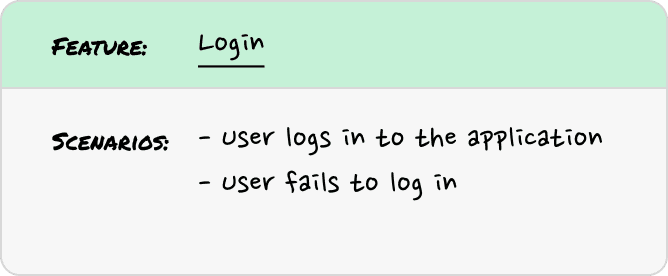
| Feature | Login |
|---|---|
| Scenarios |
|
What is a Test Case?
A test case is a detailed documentation of specific steps, inputs, and expected results to verify a behavior.
It answers "How exactly should the application behave when given specific inputs".
A test scenario can be expanded to multiple test cases, for example:
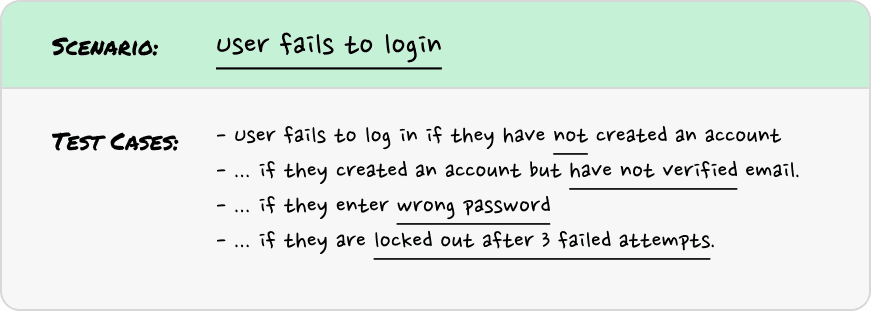
| Scenario | User fails to log in |
|---|---|
| Test Cases |
|
The audience for this documentation are software testers and engineers. It is meant to serve as instructions on how to reproduce and verify a specific behavior. Thus, it is low-level and includes details on preconditions, test steps, data, and expected results, forming the basis for manual testing and for automation. Each test case is also usually given unique IDs for the purposes of tracking outcomes (e.g. passed, failed, skipped) and tied to bug reports.
Here's an example:
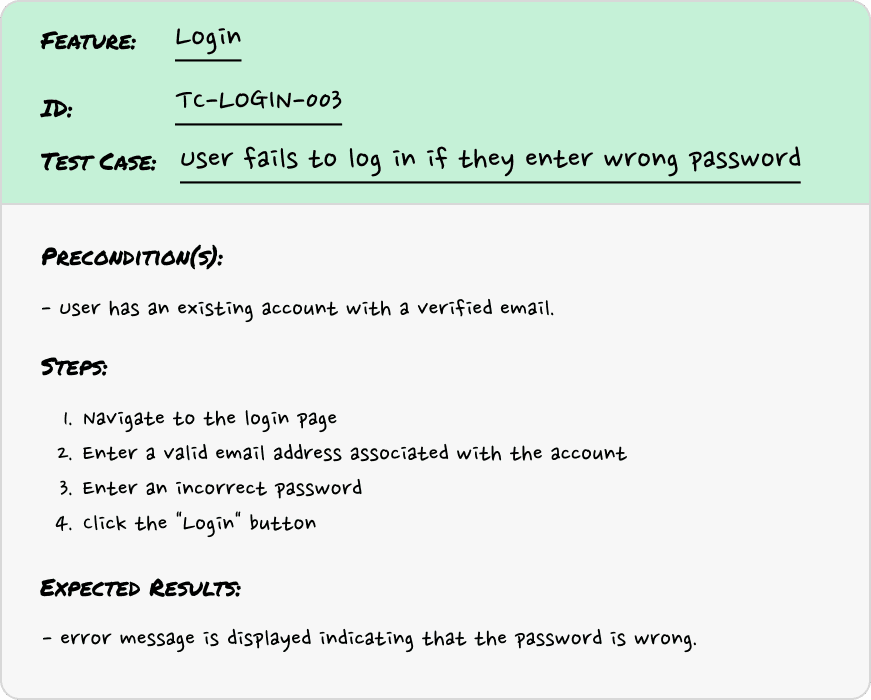
| Test Case ID | TC-Login-01 |
|---|---|
| Title | User fails to log in if they enter an incorrect password |
| Precondition(s) | User has an existing account with a verified email |
| Steps |
|
| Expected Result | An error message is displayed indicating that the password is incorrect |
Tools for Managing Test Scenarios and Test Cases
You can document test scenarios and test cases with anything — from a simple spreadsheets to full-featured test case management platform.
The right tool often depends on the size of the project, the team’s maturity, and their need for automation and reporting.
In fact, many teams use a mix of tools, with different ones catering to different stakeholders or stages of the testing lifecycle.
📝 Notion pages and Excel / Google spreadsheets
Perfect for small projects with just a handful of test scenarios and test cases, especially when testing is done manually.
However, usually as the product grows, these documents often become bloated and messy, making it difficult to manage over time and lacking visibility over test statuses across runs.
⚙️ BDD Frameworks
Ideal for teams that want to bridge the gap between documentation and automation and enhance collaboration between business analysts, testers, and developers.
BDD (Behavior Driven Development) Frameworks like Cucumber, Gherkin, Robot Framework allow test cases to be written in plain language (using Given-When-Then structure) which can then be hooked to automated tests. This creates living documentation that stays up to date because it runs as part of your automated test suite.
📊 Full-featured Test Management Tools
Best suited for mature QA teams running large test suites at scale.
Test Management Systems such as TAMI Studio, TestRail, and Zephyr for Jira provide a unified platform to:
- Plan and document scenarios and cases
- Track statuses across runs
- Generate high-level dashboards for managers
- Provide granular reports for engineers
- Integrate with automation frameworks and CI/CD pipelines
- Integrate with issue tracking tools
These tools give you the traceability, accountability, and visibility needed to manage complex test cycles.
TAMI Studio : The Perfect Tool for Teams at Any Stage
Whether you are just starting out with a handful of tests, or managing a large test suite, TAMI Studio gives your team everything you need to plan, automate, and track tests — all in one place.
TAMI Studio is a next-gen Test Management Platform for planning test scenarios and cases, organising them by features, tracking statuses across environments, with integrated low-code automation, and built-in scheduling and notifications.
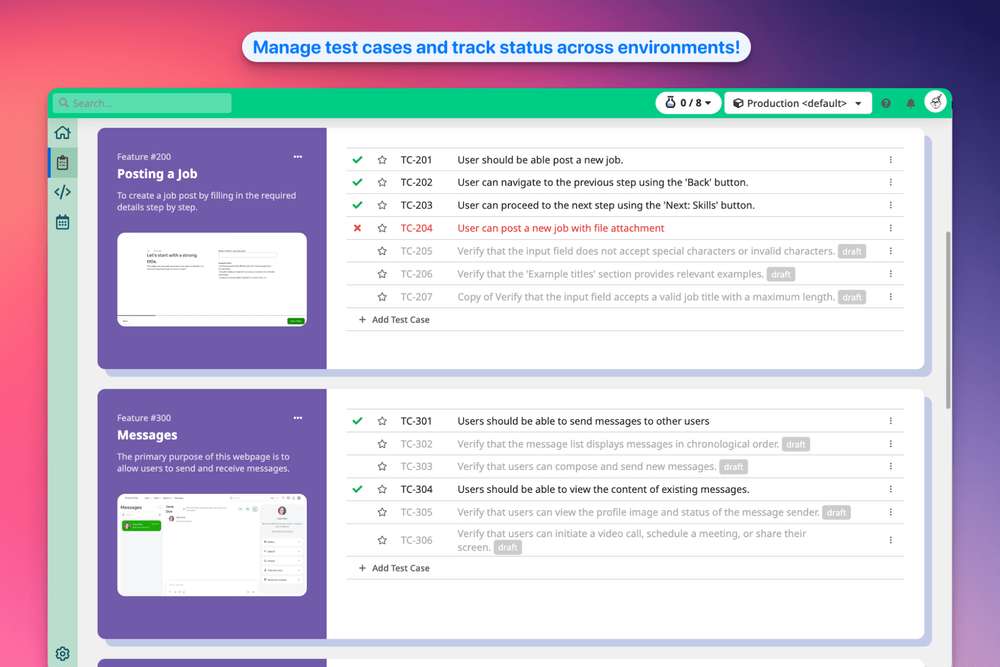
It features TAMI — a powerful AI assistant that can help you quickly bootstrap your test plan and automation. TAMI (Test Automation Machine Intelligence) is a Vision AI that can analyse screenshots and recordings of your application to identify features, suggest test cases, and document test steps.
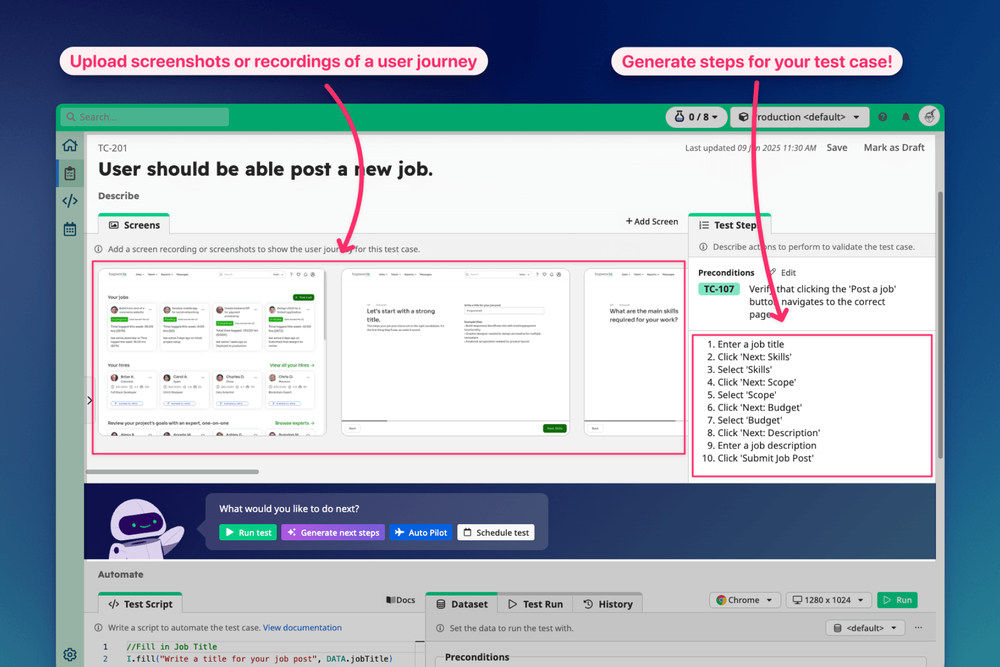
You can automate tests (or ask TAMI to do it for you!) using our low-code test framework.
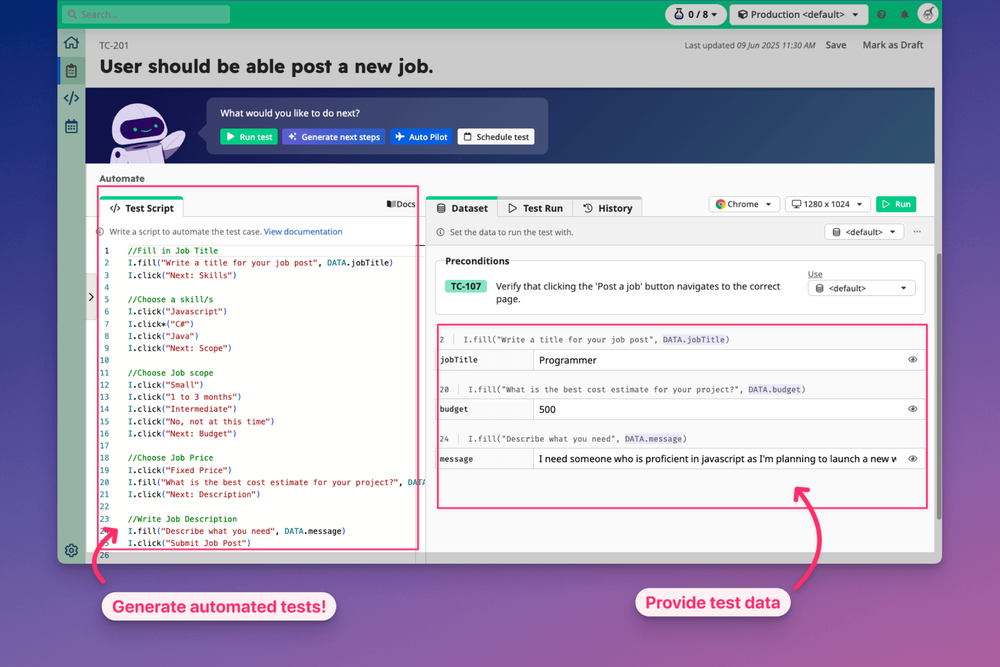
TAMI Studio comes with batteries included. Run tests directly within TAMI Studio on our cross browser testing grid, and track statuses across environments (uat, staging, production). There's no need to setup or maintain your own infrastructure and integrations for automation.
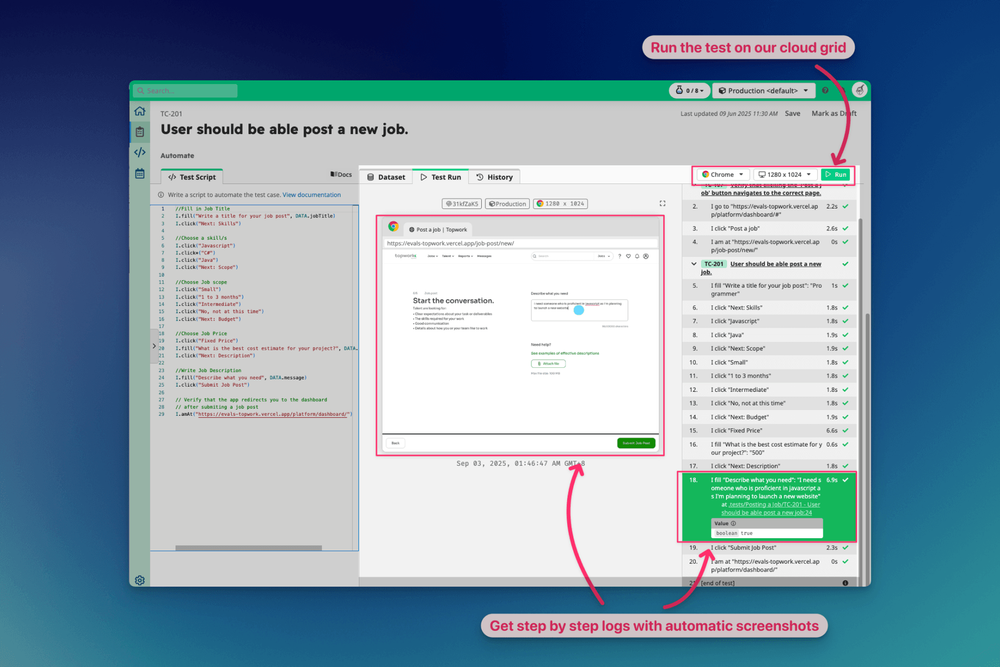
Tests failing? TAMI can also analyse test outputs such as screenshots and logs to diagnose the issue and suggest fixes for broken tests or even help you write a clear and detailed bug report for your devs.
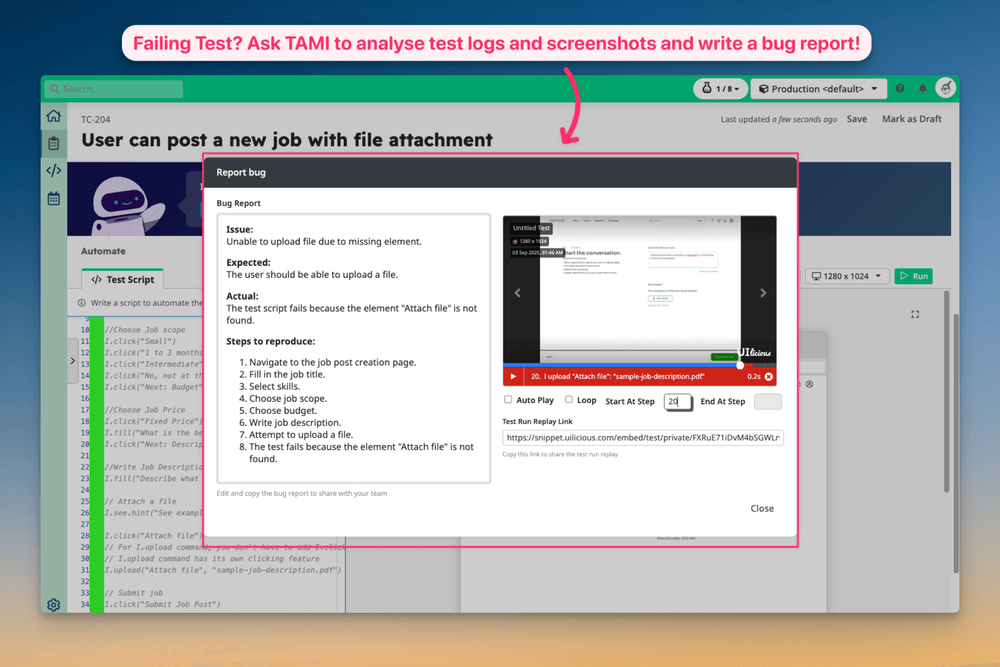
Once tests are stable, you can setup jobs to run tests on a schedule, and fire notifications when a test fail to your team via email, Slack, Teams, Discord and more.
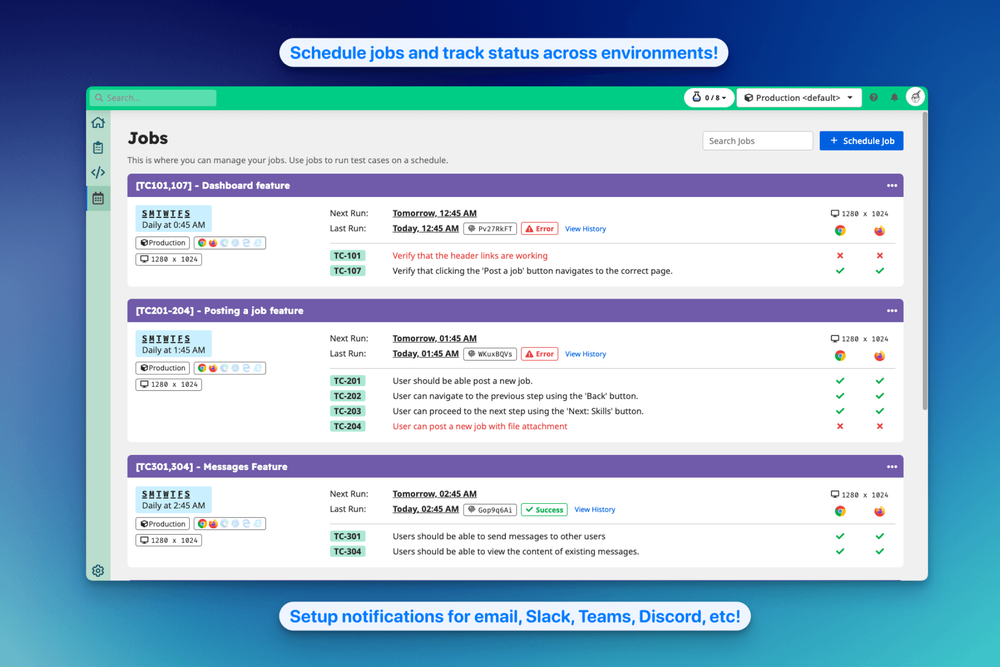
Ready to supercharge testing?
TAMI Studio makes it fast for small teams to get started, and gives large teams the structure and automation they need to scale with confidence.